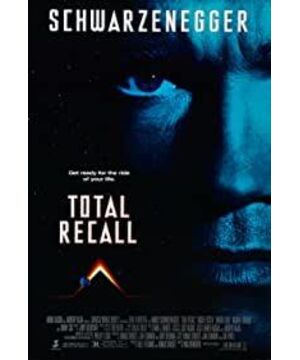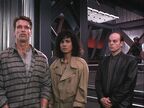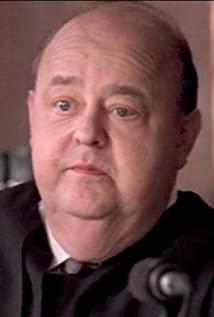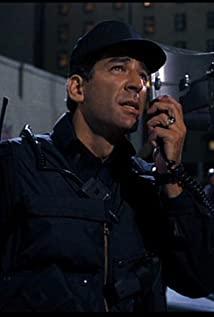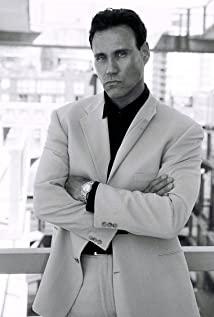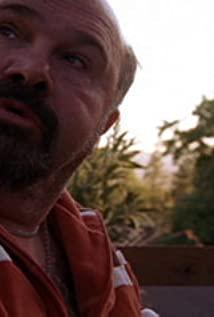about the film Total Recall movie and video game aesthetics of
the original: http://10oclockdot.tumblr.com/post/47364423600/on-total-recall-and-video-game-aesthetics- in-film
1
The area where memory, dream, and video meet has become the focus of exploration and interpretation by a large number of video makers, from experimental pioneers like Bruce Conner to skilled craftsmen in action films like Paul Verhoeven. Jason Vest explored the difference between real memory, virtual implanted memory and fantasy dreams produced by technology in his book "Total Recall" (later brought to the screen by Philip K. Dick). The film provides a lot of clues, prompting us to doubt the reality status of the plot, but it also reiterates that a person in reality and feeling cannot accurately monitor the status of his reality and feeling.
2
In addition, Verhoeven provides a lot of irony and a strong sense of self to blur the boundaries. How should we make the screen for the confrontation between Edgemar and Quaid? How about using a huge video screen the size of two windows in Quaid's house? Should we ignore the incredible plot by putting them in place through the action factor? Or should we attribute the unbelievable part to Quaid's dream fantasy? Here the link between dreams and drama appears again, just like Buster’s role in Sherlock, Jr dreamed of a fantasy adventure travel, symbolizing suspense movie factors, maybe Quaidz just wanted to represent Mars adventure in his dream, which depends entirely on action factors. Metaphor.
3
In the traditional excellent film about dreams, Total Recall maintains the visually incredible to definitely tell the difference between dreams and waking states. Therefore, it is difficult for us to say with certainty whether the film should be shot like a lucid reality, or whether it should be Quaid's dream about the moment he first went to Rekall. I must say that a serious understanding of the film itself brought more audiences in the follow-up. In addition to the unbelievable absurd part of Total Recall, considering that Rekall employees seem to have weird insights, Bob McClane tried to recommend Quaid’s Mars vacation package as a secret agent and promised him "You got this girl and killed the bad guys." , You can save the entire planet!" Indeed, this is the truth.
4
In the movie, Dr. Edgemar tries to convince Quaid that he is experiencing schizophrenia, "The foundation of the delusion of freedom is our memory bond." When Quaid, who questioned this question, threatened Edgemar with force, E explained what would happen next. "" Indeed, all the prophecies also happened, and the dazzling light at the end of the movie concealed the kiss. Verhoeven said that white represents Quaid lost in his consciousness, he became Lobotomized, which is a perfect explanation consistent with the movie's character predictions.
5
So if we accept that this film is a dream, what kind of dream is it? E tells Q that his delusion is based on R's memory link, but "you create new ones in the process." The creative interaction controlled by the program implies more to me. Furthermore, what I am discussing is that Quaid accepts this memory simulation like playing a game. The fact is that people can explain more in the movie by adjusting the interactive tools developed in the virtual reality movie. But I think there is nothing more in line with his aesthetics and transition than assuming that Total Recall is a recorded game.
6
Scene after scene, the aesthetics of Total Recall is like the aesthetics of video games. At Rekall, McClane planned out the promise of the game to Quaid: an opportunity to become another. He said: "You complete a journey in yourself. He is the most advanced form of travel, called Ego Trip." When Quaid agreed, McClane and Dr. Lull let him enter the process of choosing a role. Ernie, a young technician, reiterated that "he definitely didn't want to come back." This really happened afterwards. Later, when Edgemar faced Quaid, he was given two options to return to reality or continue the game. Quaid, who was not satisfied in the game, due to his brain's judgment and visible reasons (slid sweat drops), made him disbelieving what Edgemar said, and chasing more interactive experiences.
Just after Johnny rented Quaid from ReKall to the destination, his working friend and three bad guys blocked him and wanted to kill him. But after an incredible hand-to-hand fight, he killed four of them. Like many games, game characters kill non-game characters, and weapons are used to solve many problems. The grid of tiles and the blank walls when the 4 people die is visually an undifferentiated polygonal space, a metaphor for video game architecture.
After solving these 4 bad guys, Quaid won the "first level" of the game. As if to emphasize this point, the game Rick switched to a text interactive game: Quaid's fake wife Lori is playing a kind of holographic tennis.
7
After the dispute with Lori, he pushed Quaid to run. The film promotes the plot through a series of coincidences, such as the design of the right coincidence, which pushes Quaid to complete a series of distorted, purposeful actions. A uniformed man who didn't know where he came from, pushed the plot and brought Quaid to Mars. Benny's taxi always happens to appear at the right time, effectively send Quaid to the next plot point. In another narrative mode, the audience spurned the coincidence of editing around the character, which kidnapped the audience with narrative tension. However, in video games, the player's anticipated plot, whether impossible or illogical, will appear at the right time. In the end, viewers began to notice that Quaid's personal freedom was actually not related to the environmental clues he was looking for.
When Benny used a huge machine to attack Quaid, it was not just a weapon that appeared in the right place at the right time, but also a machine with great wall-piercing power, explaining the existence of the basement, leading to the climax of the third act. After the paragraph with Benny ended, Quaid and Melina's injuries miraculously healed (it happened many times before). It was as if they were all upgraded and regained blood. Then, the ancient alien reactor-the final boss, waiting for them to board the final duel.
8
In this sense, total recall is the pioneer of the rise of video games in the media field. Not only did video games begin to take over the Hollywood economy, but also in response to a world market share of $7 billion per year. The use of game aesthetics has become common to movies. This situation also occurs in movies that do not use games. Nolan’s Inception shows a rule-bound universe, and violence is called the preferred mode of conflict resolution. Separate levels and difficulty of continuously upgraded actions (coincident with the dream level), and characters with extraordinary abilities that can withstand the strong firepower of the enemy without injury (SAITo is a special case, but the increase in his injuries promotes the challenges of other characters) . Jim Emerson wisely believes that Inception is a puzzle-solving movie conceived as a video game.
9
But even though these characteristics make Total Recall a hypermasculine, misogynist, ultraviolent, sensory-motor-reward-circuit automatic-reaction thought-destroying pleasure-center-stimulation-fest movie, Total Recall is actually an overly complex movie. Through the use of universal symbols and enhanced styles, comprehensive recall prompts the viewer to give way to reality and believe in an incredible narrative space. Afterwards, the film pointed out these untrustworthiness and made them stand against each other in the film. After that, give us an answer from the narrative, let us doubt the so-called truth in the movie. Therefore, the greatness of comprehensive recollection includes that he rationalized the universal fear by implanting reflexive doubts into the foundation of the narrative structure. For example, a movie like Grindhous tries to rationalize evil, or as far as the director’s intention is concerned, full recall requires his own fear as an important framework for the meaning of the movie. Without these funny genre marks, this movie will not improve the possibility that everything is just a QUAID dream. But duality may give us more freedom to choose whether we want to be more adventurous or look ridiculously confused. The narrative itself includes the narrative itself and our own choices. What could be better than praising a movie for showing its wisdom by pretending to be stupid, a better compliment that we always feel exceptionally superior when we reasonably affirm his brilliance?
10
Comprehensive memories were born in a special transitional period in art. The ending is attributed to the startling advertising, including novelization and video gamification. In the middle of the 20th century, artistic aesthetics and game architecture began to merge. OuLiPo experiment, accidental music, and later self-selected adventure books, isolated art is combined with game elements for the first time by co-creating experience with readers or musicians. Romans a clef (RPS novel) has existed for a hundred years, and challenging readers can disassemble unsolved mysteries, and like Bruegel's Netherlandish proverbs encourage a decoding practice somewhere between Where's Waldo, a rebus, and Amelia Bedelia. But just look at it this way, when reading and While the viewing experience remains basically impressive, this explanation provides the puzzle (or game) element. Adding game elements to the artwork makes the audience a co-creator. Instead of presenting the audience with a set and completed aesthetic perception. The artwork affected by the game contains more algorithms that may interact with the audience to create experience. Needless to say, this is a huge change.
1. The triple overlap of film, memory, and dream has become a crucial locus of investigation and play for a number of reflexive filmmakers, from experimental pathbreakers like Bruce Conner to crafters of slam-bang action blockbusters like Paul Verhoeven. Jason Vest argues in his well-titled book on Philip K. Dick adaptations in cinema that Total Recall (1990) reflexively explores the indistinguishability of real memory, fictional implanted memory, and a technologically-produced fantasy dream. The film offers a number of clues to suggest that we should doubt the reality status of the diegesis, but it also reasserts (as Plato and Descartes once did) that one cannot definitively test the status of one's own reality or perception while bound within that reality and perception.
2. In addition to this, Verhoeven provides a number of hiply ironic and self-aware flourishes (as well as some classically metacinematic gestures) to further blur the lines. What should we make of the prominent mirrors in the scene where Edgemar confronts Quaid? How about the large video screens in Quaid's home which double as window simulators? Should we dismiss the implausibility of the plot by situating it solely within the action genre, or should we narratively account for its implausibility by explaining that it's all Quaid's dream-fantasy? Here dreams and cinema link up again; just as Buster Keaton's character in Sherlock, Jr. dreamed up a fantasy adventure determined (and overdetermined) wholly to the tropes of the mystery film genre,perhaps Quaid merely dreamt his adventure on Mars (while hooked up to a machine at Rekall) entirely according to the tropes of the action genre.
3. In the tradition of the best films on dreams, in Total Recall it remains visually impossible to definitively tell the difference between dream and waking states. Thus, we cannot say for certain whether the entire film should be taken as waking reality, or whether the film becomes Quaid's dream the moment he first goes under at Rekall. I'd like to suggest that a careful interpretation of the film turns up more evidence for the latter. In addition to the unbelievable absurdity of the plotting of Total Recall, consider the uncanny clairvoyance which Rekall's employees seem to have (and they're not even mind-reading mutants, though they do have mind-hacking technology). Bob McClane, trying to upsell Quaid to the “secret agent” Mars vacation package, promises him, "You get the girl, you kill the bad guys, and you save the entire planet!”And indeed, this is just what happens.
4. Then, at the midpoint of the film, Dr. Edgemar arrives to try to convince Quaid that he's experiencing a schizoid embolism, “a free-form delusion based on our memory tapes.” When disbelieving Quaid threatens Edgemar with violence, Edgemar explains what will happen next: “One minute you'll be the savior of the rebel cause, then, next thing you know, you'll be Cohaagen's bosom buddy. You'll even have ridiculous fantasies about alien civilizations–as you requested. But in the end, back on Earth… You'll be lobotomized” (script here). And indeed, all the rest of that happens, too, right down to the blinding glare of light that overwhelms the kiss at the end of the film. Verhoeven himself has said that this white-out represents Quaid's loss of consciousness as he is lobotomized (see Vest, p. 38),an interpretation perfectly consistent with the predictions of the most reliable characters in the film.
5. So if we accept that the entire film is a dream, what kind of a dream is it? Edgemar tells Quaid that his delusion is based on Rekall's memory tapes, but “you're inventing it yourself as you go along.” This brand of creative interaction with a program implies more for me than Quaid taking over his memory simulation and constructing it according to action film clichés. Rather, l argue that Quaid takes over his memory simulation and begins to play it as though it were a game. To be sure, one can account for quite a lot in Total Recall by adapting interpretive tools developed for simulated reality films (like World on a Wire) or dream films (like Waking Life), but I argue that nothing rationalizes its aesthetics and excesses better than postulating that Total Recall is a recording of gameplay.
6. Scene by scene, Total Recall's aesthetics resemble the aesthetics of a video game. At Rekall, McClane lays out for Quaid the promise of video games: the opportunity to be someone else. He says, “You take a vacation from yourself. It's the latest thing in travel, it's called the Ego Trip." When Quaid agrees, McClane and Dr. Lull take him through the process of character selection (see above). Ernie, the young technician, remarks, “He's not gonna wanna come back ." And indeed, this is what happens. Later, when Edgemar confronts Quaid, he gives him the choice, in essence, between returning to reality or continuing to play. Quaid, sensing that the game has not yet fulfilled his desires,invents both conceptual justifications and visible reasons (the trickle of sweat) to disbelieve Edgemar so that he can pursue more of his interactive fantasies. Just after the Johnny Cab drops off Quaid from his first visit to Rekall, his buddy from work and three other thugs corner him with the intent to kill him. But with inexplicable adeptness for hand-to-hand combat, he disarms and kills all four of them. As in many games, the character has skills which the player does not, and weapons are used to solve a great many problems. The tiled grid and blank wall upon which the four others die visually suggest a space of undifferentiated polygons, a metaphor for video game architecture. Having dispatched these four bad guys, Quaid has beaten the first “level” of the game. As if to underscore this point,the film immediately cuts to a literal interactive game: Quaid's ersatz wife Lori playing some sort of holographic Kinetic tennis.
7. After his altercation with Lori puts Quaid on the run, the film threads the plot through a number of deus ex machinas-cheap just-in-time coincidences designed to propel Quaid down a twisting path of goal-driven action. A man with a suitcase appears out of nowhere so that the plot can take Quaid to Mars. Benny's taxi always seems to show up at just the right moment to efficiently ferry Quaid, et al, to the next plot point. In other narrative modes, spectators spurn deus ex machinas as tawdry shortcuts around character development, things which rob the audience of a proper working-out of the narrative tension. But in video games, the player expects that the plot will always arrive just in time, by whatever implausible or illogical means available . Eventually,the viewer begins to notice that Quaid's individual free will become irrelevant as he tracks down whatever clues the environment drops in his lap (he follows them to Mars, to the Last Resort, to Kuato, and so on). When Benny turns on Quaid and attacks him with a large mining machine, not only does a weapon appear at exactly the right place at exactly the right time to penetrate the cabin and kill him, but the machine even unbelievably breaks through a rock wall, revealing the subterranean chamber which will provide the third-act climax (a towering ejaculation of air). Within moments after this run-in with Benny, Quaid and Melina's injuries have miraculously healed (as they have several times before), as though they each just leveled-up and earned a restoration of health. And instead of simply blowing up the ancient alien reactor,Cohaagen-the final boss-kindly waits around for Quaid to arrive so that they can engage in a final battle.
8. In this sense, Total Recall was one of the many harbingers of the rise of video games in the blockbuster media landscape. Not only have video games begun to take over the economics of Hollywood, but in response to their 70 billion dollar annual world marketshare, it has become commonplace for films to adopt the aesthetics of gameplay. This is the case even in films which were not adapted from games. Christopher Nolan's Inception (to return to a familiar touchstone) presents a rule-bound universe, violence as a preferred method of conflict resolution, discrete levels of escalating action and difficulty (which uncoincidentally correspond to the levels of the dream), and characters which are able to withstand inordinate swaths of opposing gunfire without injury (Saito is the only exception to this,but his exacerbating injuries work to deepen the challenge for the other characters). Jim Emerson wisely opined that “Inception was conceived as a kind of video game puzzle-movie.”
9. But despite the fact that all these characteristics make Total Recall a hypermasculine, misogynist, ultraviolent, sensory-motor-reward-circuit automatic-reaction thought-destroying pleasure-center-stimulation-fest, Total Recall is actually quite a sophisticated film. Through its generic markers and stylistic excess, Total Recall prompts its viewers to make concessions on reality and believe in an implausible diegesis. Then, Total Recall takes this suspension of disbelief (which is what allowed us to accept a filmic reality which has so little in common with extrafilmic reality) and turns it against itself, giving us a reason from within the narrative to mistrust a majority of what the film seems to present as reality. As such,Total Recall's greatness consists in the way it justifies its own generic terribleness by implanting reflexive skepticism into the very foundation of the narrative. Whereas a film like Grindhouse attempts to justify its badness intertextually (it references other bad movies, so it's okay) or in terms of the director's intentionality (they meant it to be bad, so it's okay), the narrative of Total Recall requires its terribleness as essentially constitutive of the film's meaning. Without the ludicrous markers of genre, the film wouldn't raise the possibility that nearly all of it is just Quaid's dream. But its double-address allows us full freedom of choice over where we will enjoy the adventure and where we will scoff at its silliness! The narrative itself circumscribes both reactions and our oscillation between them.What's more audience-flattering than a film that shows its intelligence by pretending it's stupid, a film we can always feel superior to while justifiably insisting on its brilliance? (See quotation #6 here)
10. Total Recall arrived during a strange moment of transition in the arts. The end credits surprisingly advertise both a novelization and a video game based on the film (see above). In the second half of Twentieth Century, the aesthetics of art and the structure of games began to converge. In OuLiPo experiments (like this one), certain aleatoric music, and then later in Choose-Your-Own-Adventure books, isolated artworks first toyed with incorporating game elements by forcing the reader or musician to co- create the experience of the work on the fly. To be sure, Romans a clef had existed for centuries, challenging readers to crack an allegorical riddle, and paintings like Bruegel's Netherlandish Proverbs encouraged a decoding practice somewhere between Where's Waldo, a rebus, and Amelia Bedelia. But in such cases,the interpretation provided the puzzle (or game) element, while primary experience of reading or viewing the work remained basically an objective one, autonomous of any audience activity. Introducing game elements into an artwork turns the spectator into a co-creator. Rather than presenting the viewer with a stable set of aesthetic percepts, as artworks have always done, the game-inflected artwork contains a field of possibilities and a set of algorithms through which the viewer's interaction creates an experience. Needless to say, this is a big change.Rather than presenting the viewer with a stable set of aesthetic percepts, as artworks have always done, the game-inflected artwork contains a field of possibilities and a set of algorithms through which the viewer's interaction creates an experience. Needless to say, this is a big change.Rather than presenting the viewer with a stable set of aesthetic percepts, as artworks have always done, the game-inflected artwork contains a field of possibilities and a set of algorithms through which the viewer's interaction creates an experience. Needless to say, this is a big change.
View more about Total Recall reviews


